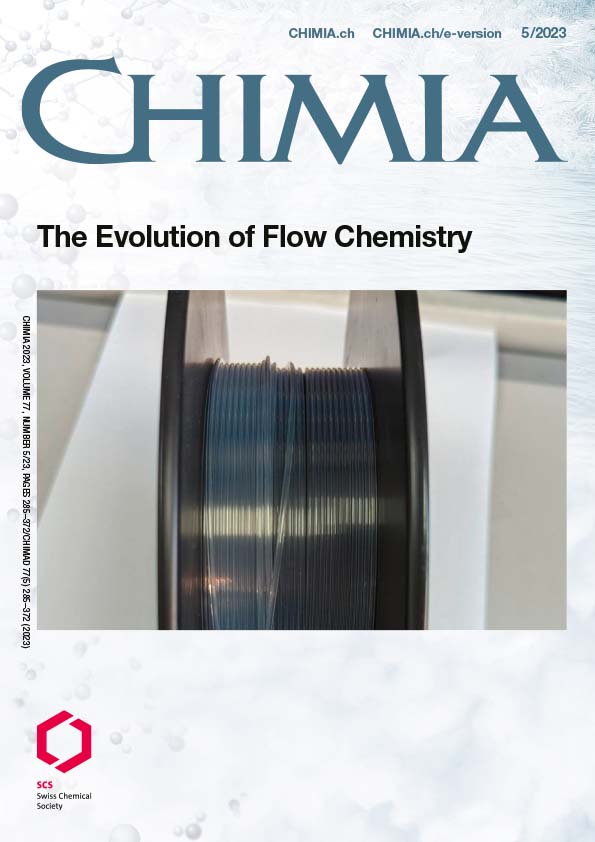The History of Flow Chemistry at Eli Lilly and Company
DOI:
https://doi.org/10.2533/chimia.2023.319PMID:
38047828Keywords:
Flow chemistry, Industrial production, Small Volume Continuous (SVC) processAbstract
Flow chemistry was initially used for speed to early phase material delivery in the development laboratories, scaling up chemical transformations that we would not or could not scale up batch for safety reasons. Some early examples included a Newman Kwart Rearrangement, Claisen rearrangement, hydroformylation, and thermal imidazole cyclization. Next, flow chemistry was used to enable safe scale up of hazardous chemistries to manufacturing plants. Examples included high pressure hydrogenation, aerobic oxidation, and Grignard formation reactions. More recently, flow chemistry was used in Small Volume Continuous (SVC) processes, where highly potent oncolytic molecules were produced by fully continuous processes at about 10 kg/day including reaction, extraction, distillation, and crystallization, using disposable equipment contained in fume hoods.
Downloads
Published
How to Cite
Issue
Section
License
Copyright (c) 2023 M. D. Johnson et al.

This work is licensed under a Creative Commons Attribution 4.0 International License.







